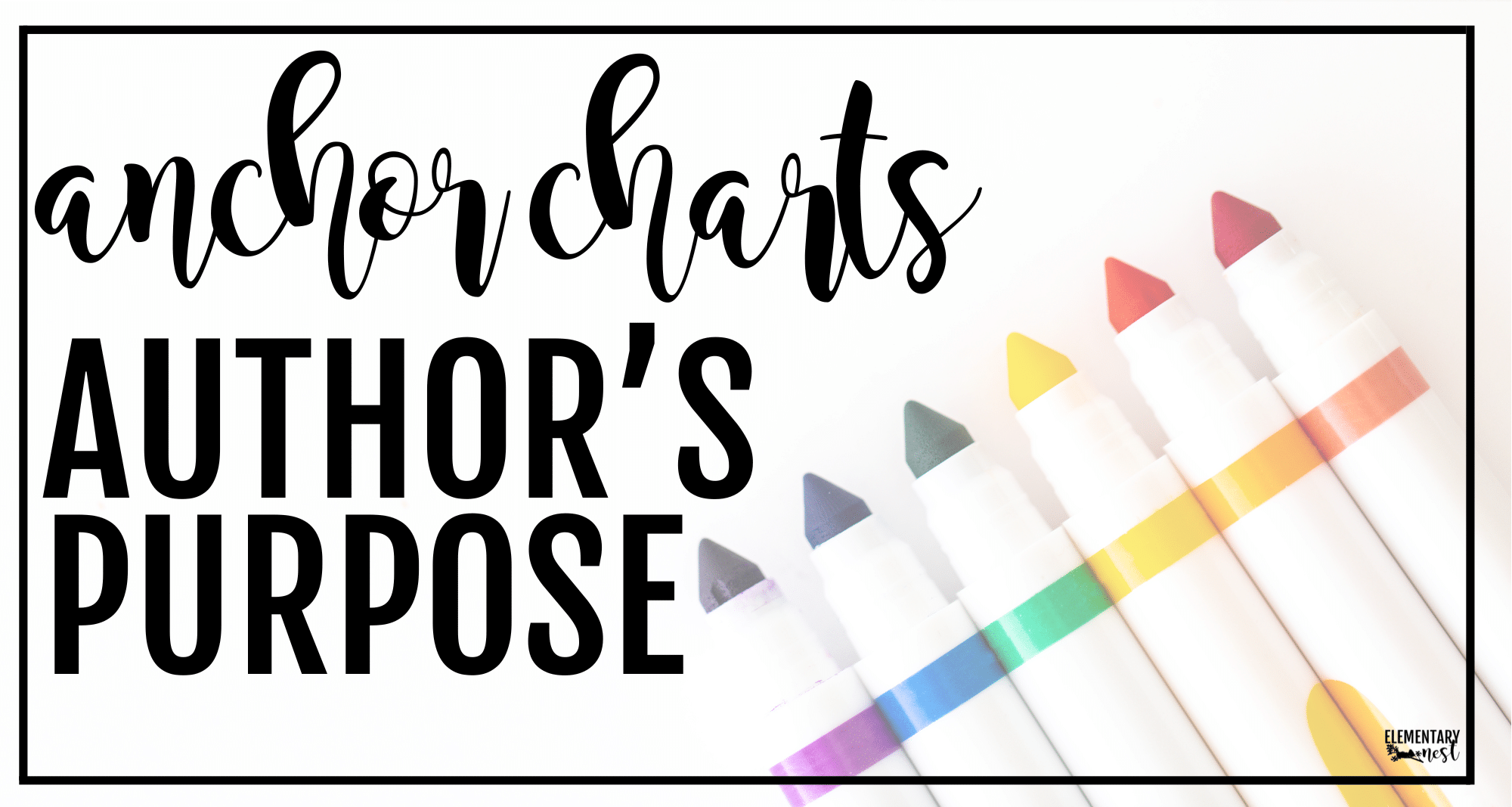
Haven’t we always taught Author’s Purpose as PIE? How do we make the switch to the new(ish) terms for CCSS? Today, I am going to talk about using three simple anchor charts to help your students understand Author’s Purpose. Bonus, continue to use these charts to enhance student knowledge and understanding throughout the year (and years to come).
Review Prior Knowledge

Firstly, you may want to review PIE. It is possible that students will have been exposed to this terminology at some point. Traditionally, we taught that an author’s purpose would have been to persuade, inform or entertain. Now that we will be introducing a different set of criteria, you may want to review the terms they’ve heard before. Create (or use one you’ve previously created) an anchor chart with the PIE terms. Simply create a column for each category and have students help you list texts that are examples of each type of author’s purpose.
Introduce New Terminology

Next, we will introduce the new terminology. Create another author’s purpose anchor chart. This time instead of focusing on PIE, we will focus on ADE. Common Core Standards state that authors write to answer, describe or explain. Many teachers are using lemons/lemonADE to help students remember these criteria. Your first anchor chart will need to have a description of each type of author’s purpose. Then, provide details about each text type. You will be able to refer back to this chart, again and again!
Facililate Interactive Learning

Then, it is time to provide examples. I would create a simple, 3-column chart. With a clear A-D-E and their titles, provide three columns to sort text examples. I used text excerpts from the Author’s Purpose Unit lesson plan activities, but you can use any text excerpts for sorting!
Read aloud or display a text excerpt. Have students refer back to the lemonADE author’s purpose anchor chart. “Think aloud” going through the criteria for each type and determine where the text excerpt belongs. Did the author write to: Answer? Describe? or Explain? Repeat this with several text examples, having students interact and sort the examples, too.

Next, use the same chart. (I recommend laminating your charts for reuse and longevity). Then, have students read text excerpts (printed passages, online articles, book samples, etc. Students will record their book titles on sticky notes and place them in the correct column. This activity and anchor chart can be reused as many times as necessary until students have learned to identify an author’s purpose.
Finally, with most anchor charts, I like to refer back to them any time it is connected to our learning. So, anytime you and your students read and text, they can identify the author’s purpose. Simply refer back to the anchor chart, grab a sticky note, and add it! Students will love seeing their list grow and grow!
Suggested Resource to Make Your Author’s Reasons Unit Easy


If you’d like a complete, ready-made unit, take a look at the Author’s Purpose Unit pictured above. This comes with lesson plans and materials, graphic organizers, reading passages, comprehension pages, task cards, and more! Click the link or button below to take a closer look:
How do you track the standards that you teach?

Get a free 2nd Grade Standards Checklist
Click the button below to get a free standards checklist for ALL 2nd grade ELA standards, ALL domains! These will help you keep track of which standards you’ve taught, which need reteaching, and which the students have mastered. Your free PDF will arrive in your inbox shortly!
















